St. Peter’s Basilica was built atop an earlier basilica begun by Constantine. Constantine’s basilica remained prominent through the 15th century, when Nicholas V decided that it needed to be greater. The project was immense, lasting until the 17th century. Michelangelo Buonarroti took over the project after 1546, under Paul III. Eventually, in 1605, Paul V destroyed the remainder of the old basilica, removed the façade (which he thought to reflect paganism), and lengthened the nave. The façade and portico visible today are the work of Maderno. Today St. Peter’s Basilica is the central Roman Catholic Church for the world. This photo shows the view of St. Peter’s Square from the roof of the basilica.
The Vatican and St. Peter's Basilica
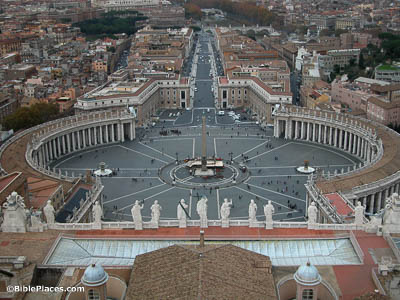
St. Peter's Square
Obelisk
The obelisk, brought to Rome from Alexandria, Egypt, stands in the center of St. Peter’s Square. Although it arrived in Rome in AD 37, it was not placed in this location until the order of Sixtus V in 1586. At that time, it took more than 900 men, 150 horses, and 47 cranes to carry it here. When the obelisk arrived, the globe on top was replaced with a cross and placed in the Musei Capitolini. At the foot of the obelisk rests the plan of a mariner’s compass.
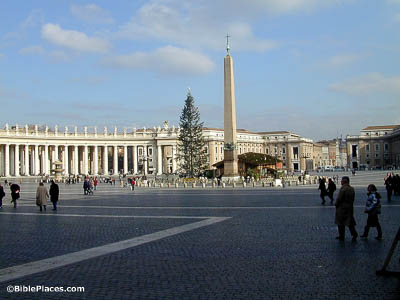
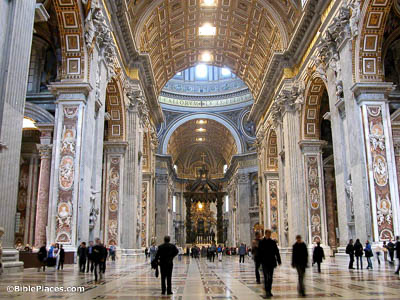
Interior of St. Peter's Basilica
The total area of the basilica is 535,400 square feet (49,737 sq m; 12 acres). The proportions are symmetric and the feel is ceremonial; the gilded coffered ceiling was an addition by Donato Bramante. The huge bronze structure at the far end of the room is Bernini’s Baroque baldacchino, finished in June 1633 under Urban VIII. It was made of metal taken from the Pantheon. Below the baldacchino lies the altar, a marble area reserved for the pope, with the confesio before it.
Dome
St. Peter’s basilica dome (138 feet [42 m] in diameter) is one of the most notable parts of the structure. Part of Michelangelo’s design, it is simple but beautiful, situated over St. Peter’s tomb. The 16 windows correspond with the 16 sections of the dome, separated by ribs, and the four pendentives hold mosaics of the Evangelists.
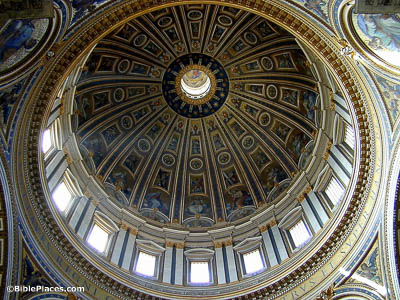
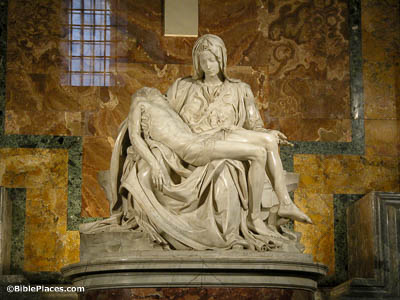
Pieta
Michelangelo’s Pietà sits in the Cappella della Pieta, a room located at the northeastern end of the nave. Michelangelo sculpted this magnificent representation of Mary holding the crucified Christ for French ambassador Cardinal Jean de Bilheres de Lagraulas. Probably the most famous of his sculptures, it is the only one with his name engraved on it.
Traditional Tomb of St. Peter
In the 1930s, an ancient Roman necropolis was found under St. Peter’s Basilica, containing what has been declared to be the tomb of St. Peter. This tomb is located just below the confesio of the basilica. Many of the popes have been buried in the Old Grottoes beneath the basilica. Among these are Pius VI, Innocent IX, Benedict XV, Marcellus II, and John Paul I.
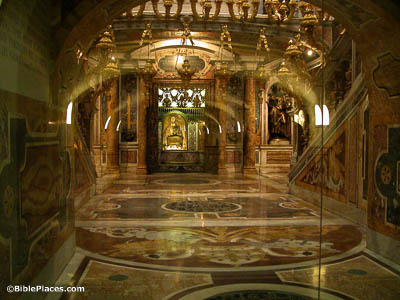
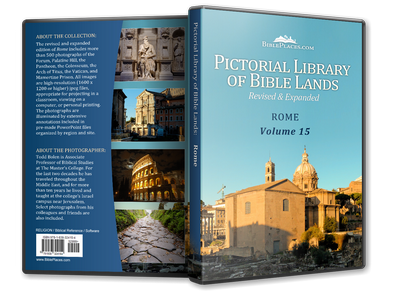
Download all of our Rome photos!
$24.00 $29.99 FREE SHIPPING
Related Websites
Vatican City (Britannica) Some basic information about the Vatican.
St. Peter’s Square (A View on Cities) A short summary of important details, including the story of the obelisk.
St. Peter’s Basilica (A View on Cities) Lots of interesting facts about the Basilica, with a brief history and descriptions of the major features.
Saint Peter’s Basilica (Smart History) Another article on the Basilica, this one focusing on its architecture and the people behind it. The 4-minute video embedded in this page is also worth watching.
Exploring the Architecture of the Vatican: A Quick Guide (Walks Inside Rome) This interesting article is included here partially because of the gorgeous photos that illustrate it.
Michelangelo, the Architect: Rome’s St. Peter’s Basilica (personal page) This is a particularly interesting look at the architectural work of the basilica, including a number of cut-aways and floorplans.
The Story of the Vatican Obelisk (personal page) This article focuses on the obelisk, with a couple photos.
Michelangelo’s Pieta (ItalianRenaissance.org) A nice introduction to this remarkable sculpture, including some close-up photographs.